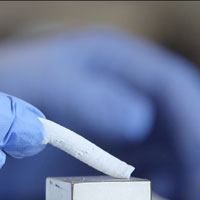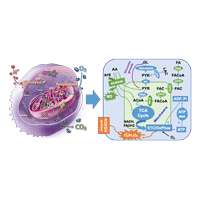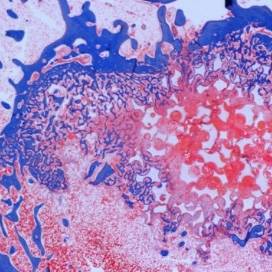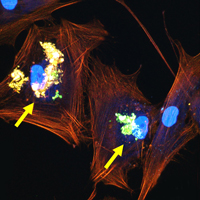Molecular, Cellular & Tissue Engineering
The Molecular, Cellular, and Tissue Engineering research specialization at the MU-MCW Department of Biomedical Engineering seeks to repair or replace damaged tissues, such as heart valves, blood vessels, skin, cartilage, or bone. To do this, researchers first look to gain a better understanding of the molecular and cellular mechanisms involved in tissue damage and regeneration. Researchers work to develop innovative tools and methods for treating diseases by manipulating biomolecules, cells, mechanical condition, and systems biology. This research theme is closely associated with regenerative medicine, which aims to restore the structure, activity, and function of the damaged tissues and organs and improve the understanding of the disease. Tissue Engineering is the manipulation and integration of synthetic and natural biomaterial scaffolds, biologically active agents (such as growth factors or cytokines) and living cells into anatomically and/or functionally specific architectures in order to repair or replace damaged tissues. Molecular and Cellular Engineering seek to produce and characterize beneficial cellular products such as proteins and cytokines (e.g. insulin, growth factors, etc.) for use in medicine and the regeneration or repair of tissues and organs. Cutting edge Molecular, Cellular, and Tissue Engineering research in the MU-MCW Department of Biomedical Engineering includes laboratories involved in bone, cartilage, blood vessel, heart valve, heart, and liver engineering. Learn more below:
Molecular, Cellular & Tissue Engineering Laboratories
 Cardiovascular Regenerative Engineering Laboratory
Cardiovascular Regenerative Engineering Laboratory
Led by Dr. Brandon Tefft, the Cardiovascular Regenerative Engineering Laboratory, or CaRE Lab, develops living tissue replacements using regenerative engineering and biomedical nanotechnology approaches. The lab is particularly interested in developing living blood vessels, cardiac valves, vascular patches, and cardiac patches that have the capacity for remodeling, self-repair, and growth.
Learn more about the CaRE Lab | Learn more about Dr. Tefft
 Computational Systems Biology Laboratory
Computational Systems Biology Laboratory
Led by Dr. Ranjan Dash, research at the Computational Systems Biology Laboratory (CSBL) uses an integrated experimental and computational modeling approach to understand kinetic and molecular mechanisms and the associated biochemical driving forces that regulate mitochondrial, cellular, and tissue/organ functions under healthy conditions, and how malfunctions in the mitochondrial and cellular machinery lead to tissue/organ dysfunctions and pathogenesis of different diseases.
Learn more about the CSBL | Learn more about Dr. Dash
 OREC's Biomaterials & Histology Laboratory
OREC's Biomaterials & Histology Laboratory
Led by Dr. Jeffrey Toth, research in OREC's Biomaterials & Histology Laboratory (BIMA) includes the evaluation of bone void fillers and bone graft substitutes, mechanisms and clinical applications of osteoinductive materials, and evaluation of materials for orthopaedic and spine devices.
Learn more about BIMA | Learn more about Dr. Toth
 Tissue Regenerative Engineering Laboratory
Tissue Regenerative Engineering Laboratory
Led by Dr. Bo Wang, the Tissue Regenerative Engineering Laboratory (TRE Lab) is working on developing bio-functional engineered tissues in an effort provide advanced therapeutic options for patients suffering from such conditions as cleft palate and vascular disease.
Learn more about the TRE Lab | Learn more about Dr. Wang

